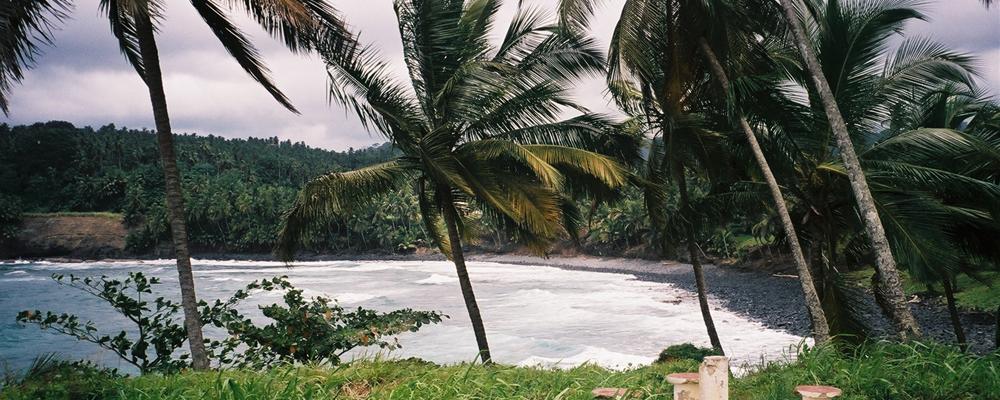
São Tomé and Príncipe
( 1 user review )São Tomé and Príncipe (often called just "São Tomé" for short) is a small island nation off the Atlantic coast of Central Africa, located in the Gulf of Guinea, straddling the Equator, west of Gabon. Discovered and claimed by Portugal in the late 15th century, the islands' sugar-based economy gave way to coffee and cocoa in the 19th century -- all grown with plantation slave labor, a form of which lingered into the 20th century. Although independence was achieved in 1975, democratic reforms were not instituted until the late 1980s, and the first free elections were held in 1991.
Understand
This small poor island economy has become increasingly dependent on cocoa since independence 34 years ago. However, cocoa production has substantially declined because of drought and mismanagement. The resulting shortage of cocoa for export has created a persistent balance-of-payments problem. São Tomé has to import all fuels, most manufactured goods, consumer goods, and a substantial amount of food. Over the years, it has been unable to service its foreign debt and has had to depend on concessional aid and debt rescheduling. São Tomé benefited from $200 million in debt relief in December 2000 under the Highly Indebted Poor Countries (HIPC) program. São Tomé's success in implementing structural reforms has been rewarded by international donors, who have pledged increased assistance in 2001. Considerable potential exists for development of a tourist industry, and the government has taken steps to expand facilities in recent years. The government also has attempted to reduce price controls and subsidies. São Tomé is also optimistic that substantial petroleum discoveries are forthcoming in its territorial waters in the oil-rich waters of the Gulf of Guinea. Corruption scandals continue to weaken the economy.
Regions
-
São Tomé Island (Ilha de São Tomé) - the larger island (and surrounding islets)
-
Príncipe Island (Ilha do Príncipe) - the smaller island (and surrounding islets)
Cities
-
São Tomé - Capital city and largest city in the country.
-
Santo António - The capital city of Principe Island.
Getting there
Visas
Visas are issued on arrival ONLY if prior arrangements are made through the foreign ministry. A visa or letter from the foreign ministry is required to board an airplane bound for Sao Tome. Local travel agents (e.g. Gold Tours) can process visa application through the ministry in a week if you email the information page of your passport and the application found on their web site. In this case you pay a service fee to the tour operators in addition to US$100 (Oct/09) to immigration on arrival to have a 30 day visa stamped in your passport. Yellow fever vaccination is checked on arrival at Sao Tome airport.
As of October 2009, the Sao Tome Embassies in Washington, DC, Lisbon and UN Mission in New York and appear to have been abandoned with all listed phone, fax and e-mail addresses failing.
In Europe, a STP visa may be obtained in Brussels: Square Montgomery, 175 Avenue de Tervuren, +32 2 734 89 66. There is no STP diplomatic mission in Oceania. For travellers arriving from mainland Africa, there is a STP diplomatic mission in Gabon: B.P. 49, Libreville, (241) 72-15-27.
There are few embassies in STP. The embassies dully accredited to STP are: Librevill, Gabon (USA); Luanda, Angola (UK); Yaoundé, Cameroon (Canada); & Abuja, Nigeria (Australia). The nearest New Zealand embassy is in Namibia.
By plane
There are two weekly flight with the Portuguese airline TAP from Lisbon to São Tomé, on Fridays and Saturdays. This stretch is flown by Air Luxor . On Sundays TAAG Angola Airlines flies to São Tomé from Luanda. TAAG also serves São Tomé from Cape Verde. Aerocontractors flies from Lagos,Nigeria Saturdays to Sao Tome.
See
-
The Obo national park is a national reserve in the south-west part of the country. Local guides offer trips with bird-watching, observation of marine turtle nesting and ascension of Monte Pico.
-
Fort São Sebastião. The fort was built in 1575 and is now the São Tomé National Museum. The US Government donated money and services to refurbish the fort back in 2006, and now for a small fee anyone can be escorted around the Fort by a trained guide. The Fort has a working lighthouse and consecrated chapel, and is absolutely beautiful at night. The Fort is flanked by statues of three famous Portuguese explorers that nobody seems to remember.
-
Boca do Inferno Blowhole. A blowhole is a cavity formed in the ground at the inland end of a sea cave. When waves enter the mouth of the cave they will be funneled up towards the blowhole, which can become quite spectacular if the geometry and state of the weather is appropriate. The Boca do Inferno (Mouth of Hell) blowhole is spectacular at any time of the day but especially dramatic at high tide and during a full moon. Go with a good camera for dramatic shots. Just go past the VOA and coffee plantation, and take a left at the second basket stall.
-
Cascada Sao Nicolau. Drive up to Trindad and pass Café Monte. Bear left and keep going until the road washes out. In the middle of the jungle is a 100 foot high spring-fed waterfall named after Saint Nicolas. Absolutely beautiful and romantic. Pay no attention to the young couples lingering…
-
Roças. Café Monte in Trindad and Sao Joao dos Angolares are two well known and easily accessible roças. Café Monte has a new coffee museum set to open, and since it is in the mountains is cool and inviting. Sao Joao dos Angolares is run by a local art shop owner; the food served in the excellent restaurant is grown on the premises. Art and knicknacks are available for sale.
-
City market. Ah, to experience public life in Sao Tome. See, hear and…smell quotidian life. Just look for the yellow taxis in front of the recently-built City Market to experience the average Saotomense shopping experience. The taxi cabs are a experience in themselves, and are so numerous they have been photographed from space.
-
National Cathedral. Sao Tome has lots of churches, all of which are worth visiting. However, the National Cathedral adjacent to the Presidential Palace is the largest in the country and is beautiful and peaceful inside. It also has a sign as you enter: “You don’t need a cell phone to talk to God here. Please turn it off.”
Things to do
The waters around Sao Tome are clear and rich with life. Consequently, diving, fishing and boat tours provide much to see. One of the few operators that offers these activities is Club Maxel .
Walk Around. Traffic is light, the sea breeze is cooling, and you can admire the architecture and people. The capitol city of Sao Tome is replete with public art. Painting and carvings by local artists, in addition to old Portuguse statues, can be found throughout the city. Often times you will walk down the street and turna corner come up suddenly against a colorful and sprightly paintng right in front of you.
Shopping is limited, but there are a few things worth purchasing, and possibly of export quality:
Claudio Corallo Chocolate. Tours of his chocolate factory are give on request. He or one of his sons will gleefully describes the shocking inferior stuff that passes for chocolate around the world. Claudio maintains complete control of the chocolate making process, from growing the pods on his own plantation on Principe through to packaging the chocolate in his own vacuum-sealed clean rooms. He gives copious free samples during the demonstration, and sells all his products right there in the demonstration room. Expensive but worth it.
Coffee. Sao Tome was famous for its coffee. The quality suffered a bit after the newly-independent Sao Tome government broke up the old rocas into sharecropper lots, but given the quality of the volcanic soil the coffee was still great. There has been a recent surge in interest in Sao Tome coffee, mostly due to Claudio Corrallo’s work, but you can walk into any shop in Sao Tome and get great coffee cheap.
Rum. Sao Tome has two rum factories within an easy trip: Gravana, which is sold out of a car repair shop next to the Central Market, and Me-Zochi which is in Trindad behind the church. Prices of a one liter bottle of rum vary from USD 3 – 7 depending on the price of sugar. Gravana rum is dark and sweet, and is best served over ice and savored like a scotch. Me-Zochi rum is also good, but the factory also sells different types of liqueurs made from local fruits. Most of their product is shipped to Europe.
Baskets. Baskets are part and parcel of everyday life in Sao Tome. Therefore they are plentiful and cheap. They are not fancy but have their charm.
Miscellaneous Tourist Stuff. Ossobbo is across from the Fort Sao Sebastiao. The shop features local artisans and products of Sao Tome, from coffee, chocolate, cinnamon and vanilla to carvings, t-shirts and thumb drives. Prices are reasonable, but the best part is the shop is run by the non-profit Sisters of Misericordia; all profits go to the craftsmen or charitable works.
Eat
Fish is a staple of the São Toméan diet, often served with breadfruit and mashed, cooked bananas. The variety of fish is wide, including flying fish at certain times of year. Inland, many São Toméans get their protein from buzios, large land snails. Sea snails are also quite common along the coast. In spite of the abject poverty, São Toméans can always count on some sustenance from the wide array of tropical fruits. The hotels in the capital offer European-style fare at European prices.
Café e Companhia. The expat hangout in Sao Tome. This is THE place to let people know you have arrived in country. Café and Companhia is popularly known as “MJs”, after the owner and former manager Maria João. MJ leases the business to a new German manager but makes appearances when she is in country. C & C is known for Thursday night jazz and the “Atomic Penis”.
Sum Secreto. Standard grill fare, but they can handle large groups without a reservation. Service is generally very good, and the meat and fish are excellent. Nothing fancy, but the place is popular because it has that secret something.
Bigodes. Located near the airport, if you decide to wait for your flight here the airport will call to let you know when your flight is boarding. Good lunches and great view.
O Pirata. Located next to the Pestana Hotel, it is one of the few places open on Sunday morning, but one suspects they just party through Saturday night. Good place to nurse a cup of coffee and an omelet and just watch the ocean. A sunken ship is right off the restaurant…hence the name “The Pirate”.
Roça São João dos Angolares. Make reservations as far in advance as possible, but it is worth it. Gourmet meals served as a multiple course prix fixe are worth the extra workout you will need.
Drink
Beer is readily available everywhere, though São Toméans are not known as big drinkers. Local brands include Creolla and Rosema. Inland, palm wine is available very inexpensively from vendors along the road. In the capital, whiskey and other spirits are popular among the elites. Wine, especially Portuguese vinho verde, is popular with fish dishes.
Sleep
A small handful of hotels exist in the capital. Near the town of Santana lies an idyllic bed and breakfast with stunning views. Opulent resorts have been built at the very northern and southern extremes of the country, on the small island of Ilheu das Rolas, and at Ilha Bom Bom off the coast of Principe.
In the main city of Sao Tome several small pousadas (B&Bs) can be found. There are three main hotels in the city.
Pestana. The brand new Pestana Hotel is advertised as the only five-star hotel in the capital, and could comfortably be described as a high four-star. The hotel is owned by the Pestana hotel chain from Lisbon. Most rooms have a great view of the ocean, and a full breakfast is included. Good restaurant, great bar, a decent gym and two infinity pools.
Agosto Neto. This hotel could be described as either a large B&B or a small boutique hotel. This quiet hotel is on a side street a couple of blocks from the Presidential Palace. The hotel is relatively new, spotlessly clean, and will open the kitchen upon request. Full breakfast is included. Internet access in the lobby, and the desk TRIES to speak English.
Miramar. The grand dame of Sao Tome hotels, this place has seen better days. In its heyday you could sit in the lobby and anyone that was important would walk past. The hotel has open wi-fi, so lots of local people still come by. A bit overpriced for what you get. The neighboring Pestana Hotel bought out the elderly German owner last year and is rumored to be converting the Miramar to a conference center.
Buy
São Tomé and Príncipe uses the Dobra, which is a restricted currency (the import and export of local currency is prohibited). The import of foreign currency is unlimited subject to declaration, and you may export only up to the amount you import. Travelers' cheques are generally not recommended. Euros, and sometimes dollars, are commonly accepted at larger restaurants and shops.
Talk
The official language is Portuguese, and due to the comparative lack of English-speaking tourists, the visitor should assume that it will be necessary.
Stay healthy
Malaria is extremely common and sometimes lethal, making malaria prophelaxis, bed netting, and mosquito repellent essential for the traveller. Water must be boiled before drinking, or purchased and consumed from bottles.
Safety
Safety is not an issue in São Tomé and Príncipe, though the roadway traffic is hazardous as in other parts of Africa. Violent crime in public is almost unheard of. However, with an increase in tourism there has been an increase in crime against tourists. Road blocks near Santana have been reported, as well as scams targetting tourists in the main city.
Contact & location
1 Review
Add your review
The photos displayed on this page are the property of one of the following authors:
Some photos courtesy of:
 . The photos provided by Flickr are under the copyright of their owners.
. The photos provided by Flickr are under the copyright of their owners.
This travel guide also includes text from Wikitravel articles, all available at  View full credits
View full credits
BurmesedaysAine Hickey, Rene Dechaine, David, Ryan Holliday, Todd VerBeek, Colin Jensen, Tom Holland, Ricardo and Yann Forget, ChubbyWimbus, Inas, Tatatabot, AHeneen, Travelbird, Valtteri, Episteme, Jake73, Janki, InterLangBot, BigHaz and CIAWorldFactbook2002
This travel guide also includes text from Wikipedia articles, all available at  View full credits
View full credits
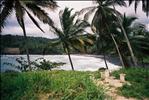
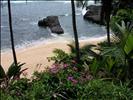
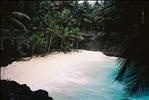
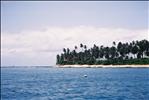




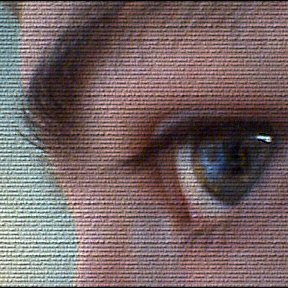



I liked
São Tomé and Príncipe is one of the most spectacular places on Earth, yet totally undiscovered. So I've started a travel blog where I report stories about the islands. I'd be thrilled if you find it inspiring: http://saotomeblog.com/I disliked
Nothing